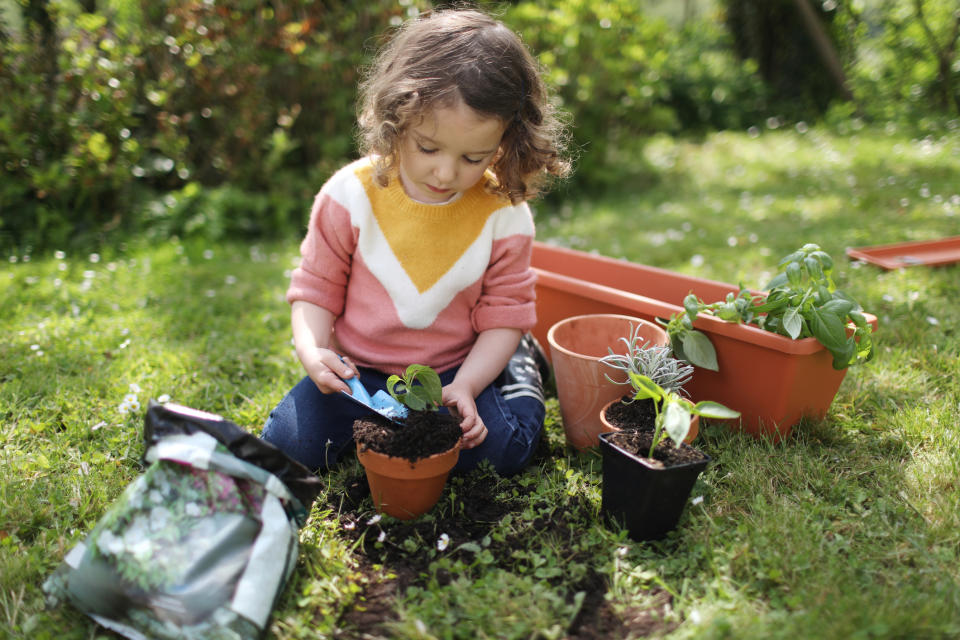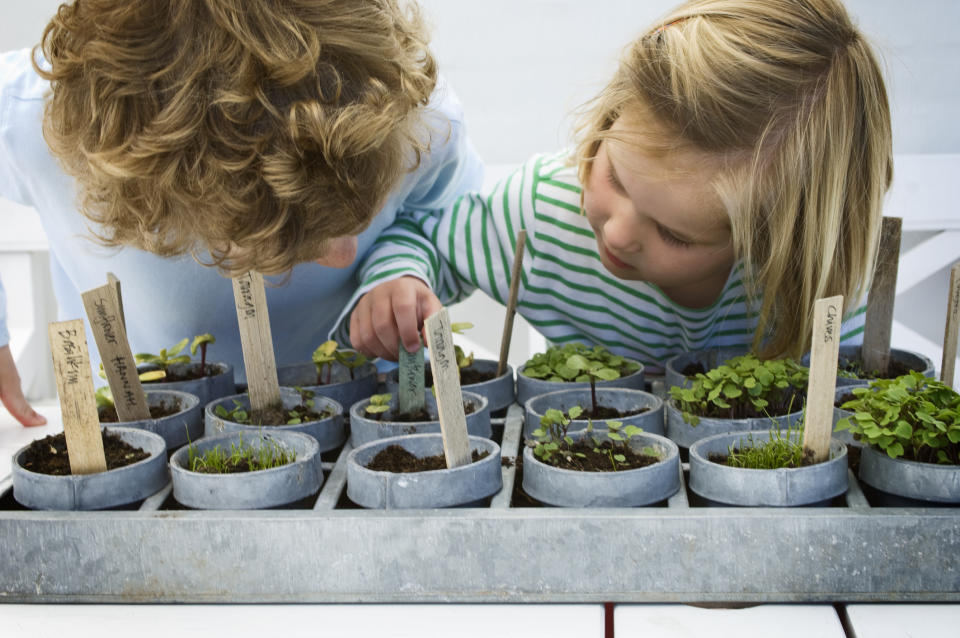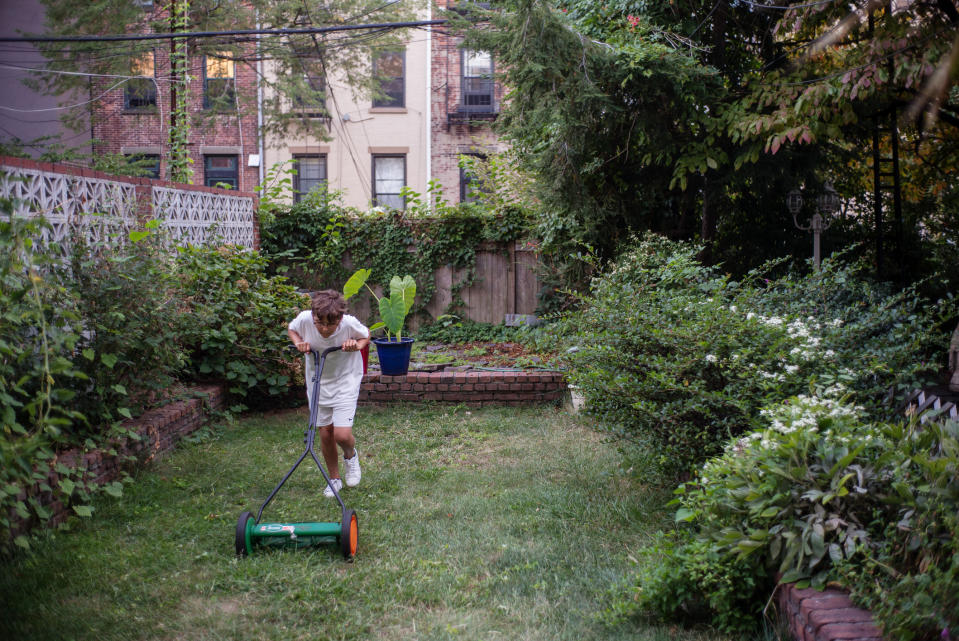Easiest ways to get children into gardening

With schools currently shut due to the coronavirus pandemic and families being asked to social distance, parents are suddenly facing the daunting task of keeping their children happy, healthy and boredom-free, while also trying to maintain their own sanity.
Online classes and activities have been helping to ease some of the parenting pressure, but gardening could also offer a bit of respite for all parties.
“The world is going through an extremely tricky and isolating time at the moment, and it's important for everyone to come together and support each other, what better way than getting kids involved in the garden!” says Lee Connelly, aka Skinny Jeans Gardener and expert for Flymo.
“I really think that the positive from this will be that children will finally explore and spend more time in the garden, and even realise that it is a usable space in the home.”
According to Connelly it doesn’t matter that many of us are taking a first forage into gardening on a tight budget and with limited resources.
“I'm all about creating something for the kids from nothing, so by upcycling, recycling and using materials from around the house, you are able to get children gardening outside.”
11 things you can easily do in your garden with kids whilst staying at home
Get planning
According to the Connelly, getting them involved in the planning is an important aspect of getting kids gardening.
“Make them part of the planning and deciding what seeds (or plants) you are going to grow,” Connelly suggests.
“Sit down with some pens and paper and design out what's going where and write a list of what you are going to grow.”
Read more: Are frozen and tinned fruit and vegetables as good for you as fresh?
Small space fruit and veg
According to Louise Golden, resident gardening expert at Dobbies Garden Centres there are plenty of easy plants, fruit and vegetables to grow with kids.
“Many don’t require much space at all, with containers, window boxes and wall planters all making great mini vegetable gardens and tumbling varieties of cherry tomatoes growing happily in hanging baskets,” she says.
Growing your own fruit and vegetables is also a great way to introduce children to the enjoyment of growing their own food.
“It can help to broaden their understanding of where the food we eat comes from and also how easy it can be to grow many everyday items on your doorstep,” Golden adds.
“Perfect for easy picking by little fingers, the best ones to try with children are peas, radishes, carrots, lettuce and sweet juicy strawberries.”
Encourage them to tend to the plants
“Getting hands messy and starting that process of seed to plant is great,” explains Connelly. “It's like magic that you get to see happen over time, and really gets children excited to watch that process.
“Once they've planted the seed, every morning make sure that they are watered all the way till the point of the vegetables growing. It really gives children a sense of responsibility and teaches patience.”
Read more: How coronavirus measures may be affecting children's mental health

Waste not want not
Buying new seeds and plants for the garden at the moment isn’t possible unless ordering online, but that doesn’t mean you can’t grow anything. Golden suggests regrowing some herbs like basil.
“Fairly easy to regrow, simply place a stem from an existing plant - which should be around 4 inches tall - into a glass of water,” she advises. “Ensure that the leaves are sitting well above the water line and place the glass in a sunny spot that gets a lot of light throughout the day, but not in direct sunlight.
“In a few days roots should form and when they reach a couple of inches long it is time to move them into soil, in a pot or windowsill box. They will grow happily inside or in pots by the backdoor for easy picking!”
Save your seeds
Did you know, you can use seeds from fresh tomatoes to start your very own home grown tomato patch? “Doing so involves the same method as planting tomato seeds from a pack,” says Golden. “Firstly, once you have removed the seeds from the tomato flesh, rinse them under cold water and leave to dry out on the draining board.
“Once dry, plant them in rich potting soil, you can even use leftover cardboard loo rolls lined in egg boxes if you don’t have seed trays,” she continues.
“Fill the seed trays or rolls with the potting soil, about half way, then firmly press down with your fingertips. Continue to fill to the top, planting tomato seeds about a quarter of the way down. Give each seed its own section. Make sure seeds are fully covered with soil and give them a little watering to make sure the soil is moist.”
Golden says you must then cover your seed containers with cling film, which forms the germination period - and takes around 7 to 10 days.
“Keep an eye on your seeds each day, as once you see sprouts start to appear above the soil, remove the cling film cover and keep soil moist with regular watering - but be sure to avoid over watering as this will cause root rot.”
Once the stalk reaches a couple of inches, Golden says it's time to move your tomato plant to a small container pot.
“Using the same potting soil, you can use a clean lolly pop wooden stick (if you don't have a garden specific stick) to support the stalk, tying gently with some garden twine or string. This will encourage it to grow upwards,” she explains.
“Make sure your plant gets plenty of sunlight and move them indoors if the weather turns chilly, continuing to water a few times a week.”
Make some seed markers
These don't need to be difficult to make. “You can create them from either painting stones, creating them with old spoons, or even easier by getting the children to draw on cardboard (that could come from an old cereal box) what they are growing, and then covering it with tape,” advises Connelly.
“This then gets children thinking about what they are growing and the final outcome of their efforts.”
Build a bug hotel
These are simple to make and can be made with whatever you can find in your garden.
“Bug hotels can be as big or as small as you like,” says Connelly. “Searching for the materials can be an activity in itself, whether that be leaves, grass, stones, twigs, bricks or wood; they can all be used to pile up and create a hideaway for the bugs.
“The great thing is that over the coming weeks you can keep coming back to the bug hotel and see who the new guests are.”
Do a DIY frog pond
According to Connelly inviting frogs into the garden can help stop slugs eating your vegetables. “The image everyone has when a frog pond is mentioned tends to involve lots of water and something that will take over the garden. But using just a simple washing up bowl can do the trick.
“All you need to do is dig the bowl into the ground. Pop a brick inside so the frogs, and wildlife, can hop in and out.
“A roof tile over half the bowl will provide shade in the hot summers. Planting around your new pond will also provide some protection from predators. You need to give wildlife a home to get them into the garden.”
Read more: The foods you can and can't freeze

Give them their own patch
Golden suggests creating a section of garden just for children to grow their own. “It doesn’t have to be very big and could even be a few pots or planters by the back door,” she says. “Giving them some ownership of their plants may even increase their level of interest, as they start to see the benefits of their gardening efforts when plants grow or strawberries and tomatoes come to harvest.
“Growing your own will also help to understand and take more of an active interest in where their food comes from and healthy eating.”
Build a den
Just like wildlife, having a place for the kids to hide and enjoy is important to get them out there.
“There are so many ways to do this, but a favourite has to the runner bean tipi,” advises Connelly. “Made from just bamboo canes and your runner bean plants, you simply dig in the canes in a circle, bring them together with tape or string at the top and this will create your tipi structure.
“Then, plant your runner bean plants next to the canes and your edible hideaway is ready to go. Not only throughout summer will the kids will have somewhere to play, they'll also have something to eat too.”
Get them weeding
While kids might want to do the more fun aspects of gardening, it’s also a good idea to get them involved in the more ‘normal’ jobs.
“Think about putting some time aside for weeding, cutting the grass and tidying up,” Connelly suggests. “By allocating about 15 – 20 minutes a week for this, it'll encourage the family to come together and it'll be just as successful as the 'fun' stuff.”


